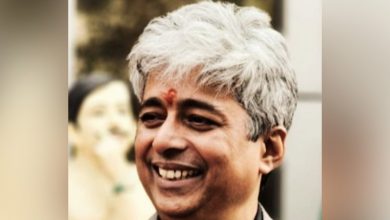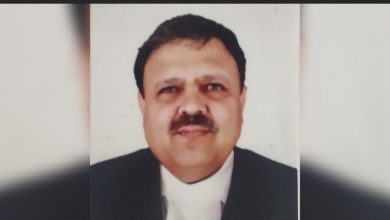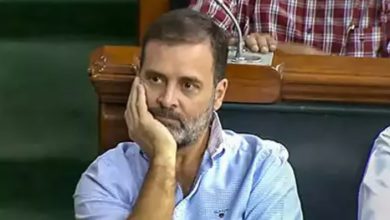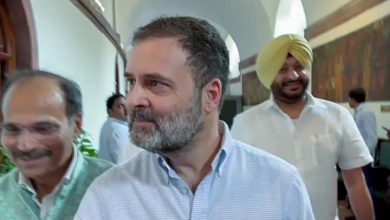
Manoj Sinha seems to be Prime Minister Narendra Modi and BJP president Amit Shah’s choice to be Chief Minister of Uttar Pradesh. In neighbouring Uttarakhand, Trivendra Singh Rawat, national secretary of the party, could be the party’s choice to lead the state for next five years. An announcement to this effect will be made after designated party observers’ meetings with MLAs in Lucknow on Saturday.
Sinha’s imminent elevation to the top post in the politically critical and biggest Hindi heartland state is yet another indicator that Modi and Shah place a higher premium on merit than on any other consideration. A tall well-built Sinha, an alumnus of IIT-BHU in civil engineering, is a three-time MP. As Union Minister of Communication (Independent charge) and minister of state of Railways, he maintains a conscious low profile but is seen as a sincere quiet doer, whose work speaks more than his words.
His biggest asset is being at equal ease when dealing with the biggest corporate honchos in the communication ministry as with earthly labour unions in the railways. Long ago, he was the BHU Students Union president. He is soft-spoken, suave and articulate, but wears a dhoti and a long kurta, which gives him that rugged son-of-the-soil look and feel.
File image of Manoj Sinha. Twitter @manojsinhabjpFile image of Manoj Sinha. Twitter @manojsinhabjp
While in the run-up to the elections and upon the declaration of poll results, a lot had been said about the social engineering effected by Modi and Shah, but by choosing Sinha, they have sent out a clear message that caste and community considerations don’t guide their preference on issues relating to governance and as such, the caste of the person at the helm is immaterial. In the last public meeting Modi had addressed in Varanasi just before the last phase of campaigning ended, he went to great lengths to praise Sinha for the work he was doing as railway minister.
What was initially considered a handicap for Sinha — his Bhumihar caste is limited only to a few districts in eastern Uttar Pradesh — turned out to be his advantage. Sinha became a caste-neutral chief ministerial contender just like Devendra Fadnavis in Maharastra, Vijay Rupani in Gujarat, Raghubar Das in Jharkhand, Manoharlal Khattar in Haryana. Even though Shivraj Singh Chouhan belongs to the OBC category, his caste and its numerical strength is not known to the wider world.
Modi is breaking conventional stereotypes that a chief ministerial nominee has to be considered only from a caste that has numerical preponderance. As the prime minister is stressing on delivery, he has been opting for people who can deliver best. He perhaps has taken this lesson from himself. Modi’s own caste had a miniscule presence in Gujarat, yet he became the most cherished leader in the state as its chief minister and later across the nation as polls after polls have indicated. He has yet again shown that he not afraid of experimenting with bold ideas as long as he thinks that they are for the long-term benefit of the people at large.
Just as by securing a clear majority on its own in 2014, Modi broke that old politicians’ and political pundits’ myth that the coalition era was here to stay and no party could secure a majority of its own for the coming decades. And by selecting Sinha to lead Uttar Pradesh for the next five years, Modi has broken another political myth that no upper caste person could become chief minister of a north Indian state.
Sources told Firstpost that though there was general unanimity that Rajnath is the tallest leader in Uttar Pradesh and had all the required credentials to once again lead the state he led 15 years ago, it was felt by Modi and Shah that his presence with the kind of statute he had and the kind of acceptability he had across the political spectrum, was required more in Delhi. With the post of Minister of Defence also falling vacant subsequent to Manohar Parrikar’s resignation (to become Goa chief minister), External Affairs Minister Sushma Swaraj not in best of health and Finance Minister Arun Jaitley’s confrontational approach vis-à-vis the Opposition, Modi needs Rajnath with all his experience and connections to be the political troubleshooter for his government, as also to be at the helm of the home ministry.
The other contender’s (Keshav Prasad Maurya) candidature for chief minister’s post ended on a slightly bizarre note on Thursday when Shah in the presence of Maurya, told media persons, “Keshavjijiska naam tay karenge, uspe mohar laga denge (whoever’s name Keshav picks, we will put our stamp on it).” Shah’s message was clear that Maurya couldn’t be a contender for the chief ministerial post. Ironically, Shah’s comment came while Maurya was distributing “Prasad” from Tirupati to media persons. Subsequent to that, the BJP state chief developed a low blood pressure problem and had to be moved to hospital.
Unfortunately for Maurya, he had too many interviews as most probable chief ministerial nominee. In contrast, Sinha didn’t even give a bite or a brief statement to the media. He kept away from the sunshine for last four days when everyone else in his peer group was basking in glory. In Uttarakhand, Rawat was seen as an efficient leader who delivered as a minister in state and as an organiser at the Centre. His other advantage was the personal rapport he had developed with Modi when the latter worked for the organisation.







